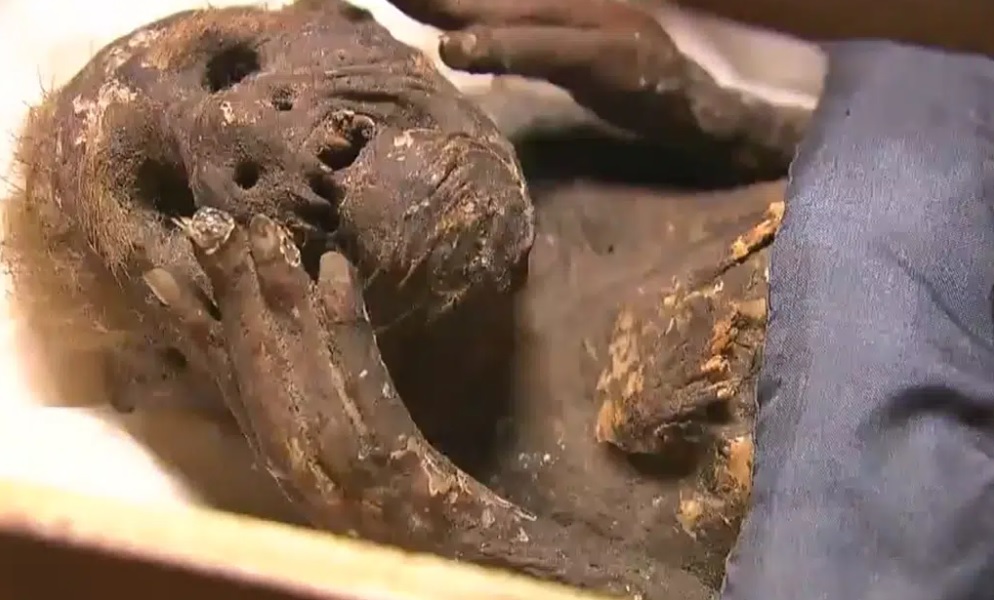Share Article
Known as Ningyo, this mermaid of sorts appears to look like a human (in some regards) with fish-like features. There are ancient records about these beings – that date all the way back to the 7th century. During the medieval times, they were believed to be a sign of ill omen. The mummified mermaid was caught in a fishing net in waters off Kochi Prefecture, Shikoku Island, during the Genbun period (1736-1741) in the middle of the Edo era.

After being caught with a fishing net off Kochi Prefecture, Shikoku Island, this freakish monstrosity was put up for sale in Osaka. Later, it was purchased by the affluent Kojima Family of Fukuyama, in Hiroshima Prefecture. The mummified remains were kept and became a coveted heirloom by the family and friends living there. In the 36th year of Meiji (1903), the Ningyo mummy was handed over to a man named Toyojiro Komori.
According to Chief Priest Kozen Kuida, the mummified remains have been kept at the Enjuin temple ever since the end of the Meiji Era (ending in 1912). But how they ended up inside the temple is still quite the mystery.
As time passed into the 1970’s, the media captured this bizarre attraction which was put up on display during the latter half of the 1970’s. After a while, fewer people were permitted to see the Ningyo mermaid creature.
This unusual creature was regarded as being sacred and was thereby worshiped by many for many years. From what the folklore said, this creature would grant immortality to anyone who would dare taste its flesh. This creature has a most grimacing looking face with two protruding hands sticking out from its body. Its teeth appear to be sharp and its body has a fish-like tail.

One curator at the Kurashiki Museum of Natural History, began to initiate an exhibition known as yokai (fantastical creatures of Japanese folklore). From this, they wanted to exhibit a full display with research done regarding the remains of this bizarre Ningyo creature. People wanted to know the truth and origin of this mummy’s remains.
While the remains were put on display inside of a glass case more than 40 years ago, the remains are now being kept inside of a fireproof safe. During the coronavirus pandemic people continued to worship the Ningyo mermaid remains.
Chief Priest Kuida noted, “Even if the mummy turns out to be a fake, that cannot diminish the role it has played as an object of worship, and the thoughts and feelings of people will not change.” Whatever the studies conclude, the mermaid mummy will continue being preserved by the temple as its treasure, the priest added.

A number of researchers from Kurashiki University of Science and the Arts would later use CT scan machines to help determine what this thing really is. As it turns out, the creature is entirely fake. It was made from paper, cloth and cotton without any kind of skeleton seen at all. They did find that the lower half of the body was from some kind of fish that was attached.

A radiocarbon dating method helped to date this fabrication to somewhere during the 1800’s. It does have some kind of historical value and culture in that regard. But it is not an astonishing discovery as once thought or believed to be. Japanese folklore stories describe the Ningyo having a monkey’s mouth with fish-like teeth and a body covered in golden scales to behold. So, the long awaited mystery has been solved. It does make for a good story though.
Source: Japan forward, Metro UK, Wikipedia and unseen Japan
Related
Share Article

